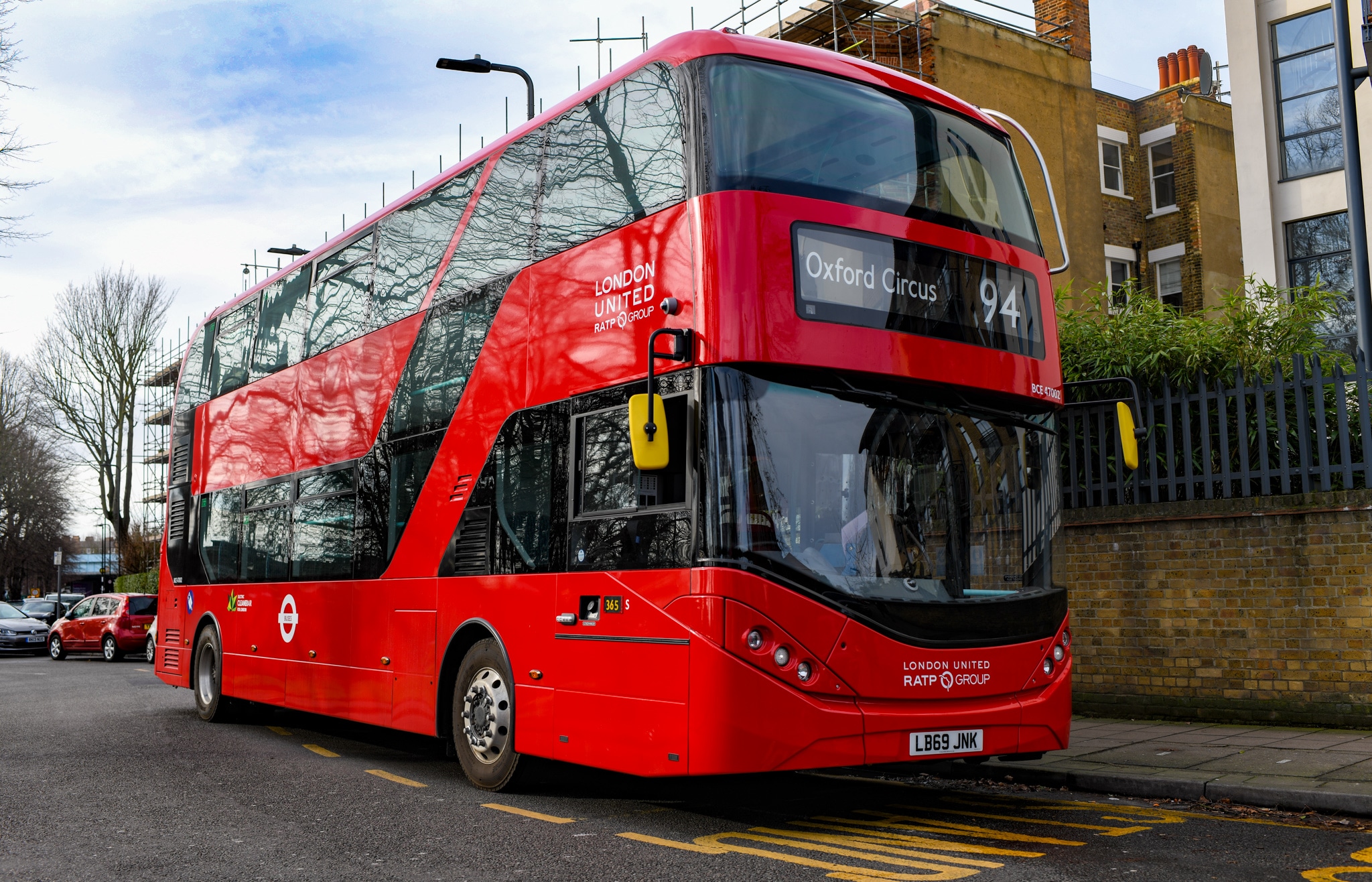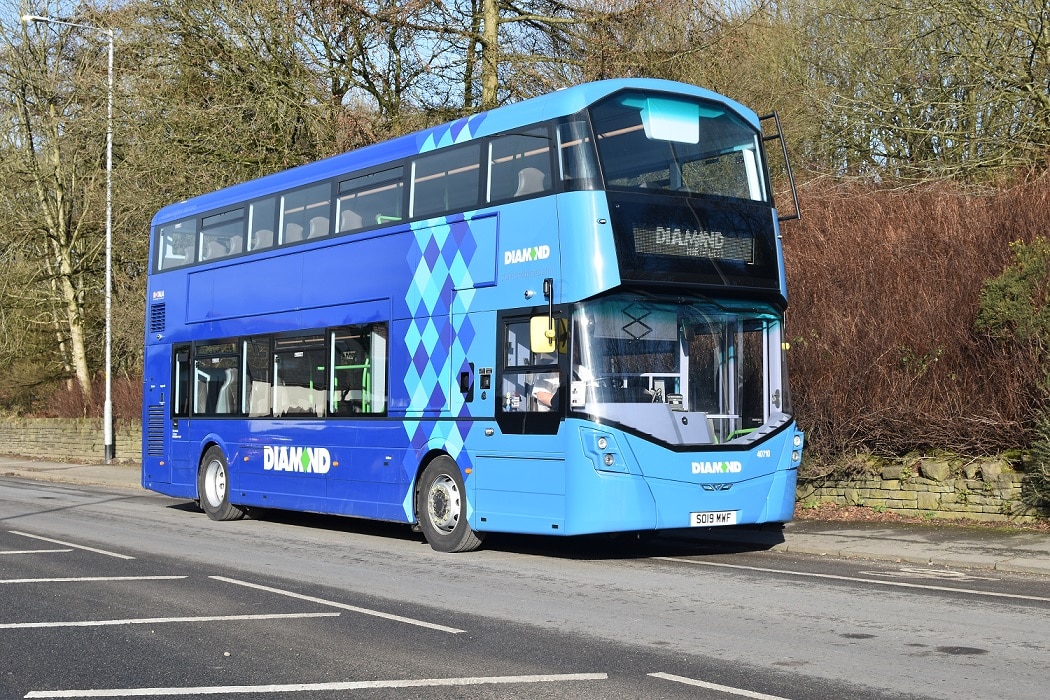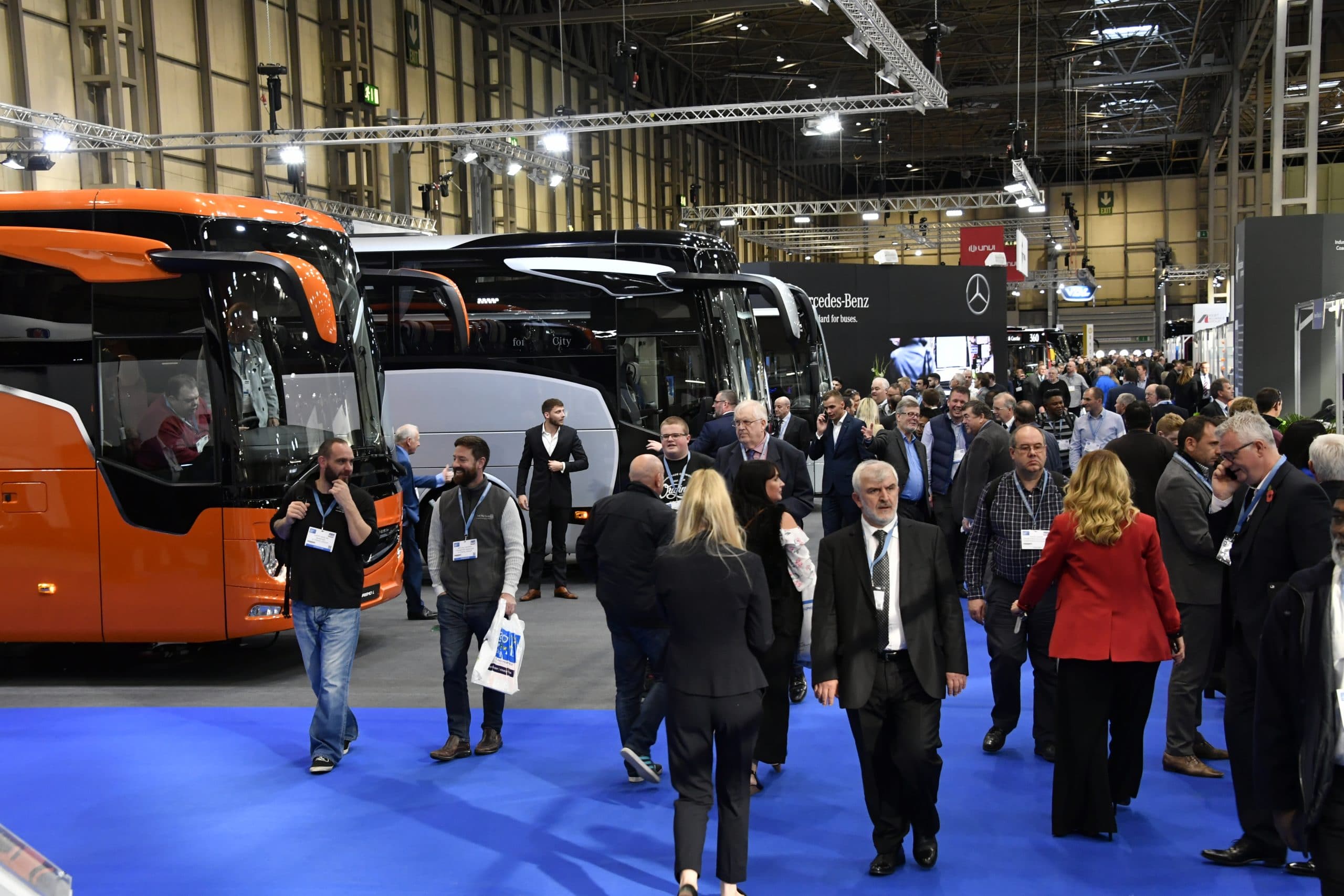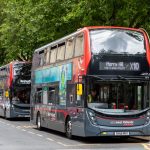In the first of its new series of webinars on electromobility, the Low Carbon Vehicle Partnership brought together experts in the electrification of public transport fleets to help operators realise the potential of zero-emission capability
Engagement was high in the Low Carbon Vehicle Partnerships’ (LowCVP’s) first Electrification of Bus Fleets webinar on Tuesday (26 May). It marks the first in a series that will look at implementation of zero-emission technology in bus fleets across the UK.
Covered in this inaugural session was the partial electrification of RATP group’s fleet at Shepherds Bush Garage – a message to operators that even in an historic property electromobility is an available and practical solution now, which can be achieved with minimal disruption.
Electrification at Shepherds Bush
Requirement of compliance with the TfL’s Ultra Low Emission Zone (ULEZ) spurred RATP’s fleet to meet zero-emission capability.
RATP began a program of electrification of its 11 bus garages in 2017. Based in Central West London, three high-frequency routes from Shepherd’s Bush garage were electrified from Acton to Picadilly Circus, Victoria Station and South Kensington.
Electrification worked in harmony with the existing garage infrastructure, including one existing fuel lane, a one-way system and nine engineering bays.

The vehicles
Of those three bus routes covered, the first two – routes C1 and 70 – are operated by a batch of 36 10.8m single-decks. Route 94 was upgraded later with 29 electric double-deck buses. The vehicles are BYD ADL Enviro200EV and Enviro400EV designs specific to the UK market, using the BYD lithium iron phosphate battery chemistry. The single-decks and double-decks carry a battery capacity of 207kW/h and 382kW/h respectively.
Charging is by BYD’s alternating current (AC) 400v 3-phase charger, rated at 80kW. By using an overnight charging window, higher power alternatives were deemed unnecessary. Management of the charging system was key, with a route schedule used to model the battery charge requirements and electricity use predictions.
By using charge management delays, the charging of lower priority of buses later into the night allow the depot to avoid peaks during busy evening thresholds.
Installation work
The first step of the installation work according to Head of Commercial – Distributed Energy / EV at SSE David Rollafson, was for energy company SSE to understand capacity requirements. “With smart charging able to schedule when buses charge, a consumption curve was built for the day and gave total capacity required for the electric fleet. This was given to the distribution network operator (DNO) to request capacity,” he explains. “A good conversation with the DNO means you can take advantage of power surplus at night.”
Two high-voltage transformers from the grid to the depot protect the charging system from failure. Metering was also considered, and modelling tools assist RATP to understand the cost of energy used.
While Shepherds Bush does not use a private network, a useful option for operators may be to deploy a renewable energy generating facility or ‘behind the meter generation’ such as solar or distributed energy storage such as batteries.
With the project phased, co-operation with the DNO was minimised and efficient. When BYD remodelled the two additional routes after the first phase, extra capacity was calculated, thus further connections were not necessary as all connections had been made in 2018.
Space limitations
Shepherds Bush operates a mixed fleet of approximately 100 buses. Electric vehicles (EVs) and diesel vehicles operate from the same depot and space is limited. A parking plan gave times of arrivals and departures to ensure no obstructions, but the implementation of electrification added even more complexity. Future electrification plans and even factors such as vehicle turn radius and charger position were further considerations.
Three low-voltage switch panels and a star configuration distribute the low-voltage supply to the depot chargers. One defining feature of Shepherds Bush, Mr Rollafson adds, is an overhead low-voltage cabling network used to distribute energy. “This minimises disruptive civil works and is flexible. Given that it is a star network you can use overhead cable trays to distribute energy down to a charging island.
“In addition to being the termination point of that ceiling cable tray, the island provides the chargers. Armco barriers protect those chargers from inadvertent bus movements.
“The barriers further provide a means of distributing cables across the depot floor in a safe manner, removing the need for ‘dig and duct’ infrastructure – resulting in a clean and easy implementation, important for keeping a depot operational.”

Challenges of electrification
Teamwork and regular communication with the SSE team helped in achieving minimal impact to operation, says Zero Emission Vehicles Project Manager at RATP Charlie Barnes.
She says no miles were lost from vehicles unable to depart. Occasionally routes were changed or areas demarcated, “but otherwise it ran amazingly smoothly. The flexibility between both teams, understanding and accommodating how to work together was key.”
A lack of groundwork made it easier to park 120 vehicles on site every night. “It’s important that the right people ask the right questions at the right time so you can put everything in place,” she adds.
Of those 120 parking spaces, losses were minimised. Ms Barnes reports that only four were lost in the initial phase, and none lost during the electrification of the second route.
RATP reports plenty of positives, including a 63% favour rate from drivers for the BYD EVs over hybrid and diesel models. Appreciation for the positive impact on the environment, superior handling, control, and smooth power in the motor is cited. RATP has also reported a significant reduction in mechanical lost mileage, though gremlins have been found in door and ramp operation for some older models.
What RATP has learned, adds Ms Barnes, is that a higher proportion of EVs makes introduction easier. More charge points means more options available. A smaller fleet demands more stringent time keeping to access charging points. She estimates that RATP has halved the amount of diesel used and benefits from cheaper nightly tariff rates through the smart charging.
The reduction in noise pollution has also been effective – so much so that it has raised awareness of the reliance on vehicle noise when safely navigating vehicle movements. RATP works with TfL’s acoustic vehicle alerting system project to design additional vehicle noises and improve safety.
Lessons learned
Electrification of the Shepherds Bush depot has been instrumental in understanding the longer-term effects of installation, Ms Barnes explains.
“Understanding the effect on teams’ roles, processes and how we move onto business as usual has made this a fantastic trial. How we disseminate that information and maintain it going forward to minimise the impact on the remaining 10 depots, the ongoing maintenance of high voltage equipment is key.”
RATP advises operators looking at fleet electrification to capitalise on available expertise. “It has been fantastic working with BYD and SSE,” Ms Barnes adds. “Understanding their knowledge, being able to take from that, share it and use it to optimise everything we do at the garage has meant a smooth operation with few issues.”

routeone comment
LowCVP’s introduction of an electromobility webinar series will continue the important dialogue necessary to remind operators of their role in looking for cleaner ways to operate fleets. The webinars will provide an interim solution until more interactive sessions can be resumed.
As coronavirus COVID-19 looks set to change the way we live our lives, the opportunity to pursue an aggressive energy policy and resume services in a greener manner has to be grasped. It was excellent to see high engagement in this first session, and all being well UK operators will continue to engage and find the right solution for zero-emissions operations in future.
Register for LowCVP’s next e-mobility webinar to join the discussion.
In brief: E-mobility solutions across the UK
The Low Carbon Vehicle Partnership is providing a supplier portal where members can support the electrification of bus fleets across the UK.
Mellor offers approaches and solutions to electric mobility. For more information, contact Steve Reeves at steve.reeves@woodall-nicholson.co.uk
Horiba-Mira offers retrofit of diesel buses to electric drivetrains. For more information, contact Greg Harris greg.harris@horiba-mira.com
Irizard e-Mobility offers a range of turnkey solutions for fleet electrification. For more information, contact shaun@irizar.co.uk



























